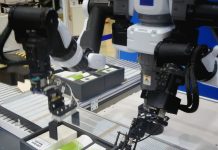There’s a reason why a POS system is the new “it” device in the foodservice industry, whether for commercial or welfare purposes. Just as important is training your restaurant employees in using this groundbreaking machine.
Point of sale restaurant systems is among today’s leading devices for operational performance and productivity. Here’s how you can benefit from them, and how you can start training your employees in utilizing POS systems.
Benefits Of Training Employees For Using POS Systems
1. Easy And Quick Access To Restaurant/Liquor store Information
Ease of access to what a restaurant offers customers is necessary for all the members of the staff therein, whether working in the Front-Of-House (FOH) or Back-Of-House (BOH). The same is true when it comes to information regarding business transactions that revolve around deliveries, inventory, partnerships, purchases, and the like.
The wrong details can cripple a restaurant’s operations, and its impact tends to be disbursed rather than isolated. A wrong purchase may lead to incomplete supplies. Incomplete supplies may lead to food preparations that are not at par with the restaurant’s standards. Thus, affecting customer satisfaction, and sales.
Resolve the situation by starting with a POS for a liquor store system. Start from the basics, and at the very beginning. The right piece of technology may very well be the bridge between better communication within the team, and better transactions and related business proceedings for your enterprise.
2. Optimal Productivity And Employee Retention
It’s a fact that innovative technologies boost productivity in the workplace. But for and in the foodservice industry, to be specific, in restaurants, the right type of technological asset is crucial in the make or break of operations. With a POS system, it’s the latter.
Research has shown that close to 70% of restaurant employees believe that restaurant proceedings are handled with much more success and with quicker turnovers (customer to customer) through the use of a POS system.
Other than this, more have claimed that businesses equipped with POS systems and similar technologies are among employees’ considerations for applying, and remaining in the same restaurant, long-term.
This is because they understand how much more work is done, and how much work is done better with POS systems waiting in the wings, backing them up. It is said that these apparatuses have the capacity to enhance workflow efficiency by at least 25%.
3. Payment Processing And Archiving
Numbers should never be glossed over in any line of business. Even more so in restaurants and/or retail. A single error will immediately tip the scales towards imbalance, especially in itemizing and summing up numbers, whether in FOH or BOH. It will mean having to revise the entire inventory by looking for the source of the accounting and/or recording anomaly.
But with a POS system’s function of making itemization clear and detailed, and the calculation of the same, human error-free, you can significantly lower the risk of incurring computation oversights. One less problem to worry about by the in-house staff, and by restaurant owners themselves.
4. Business Framework Customization
Through evaluation of organized data recorded in the POS system’s vast storage, you and your managers can have a more convenient solution for branding and/or rebranding (if necessary). This is true of creating new marketing strategies to increase sales.
You’ll have a solid foundation for inspection and research with regards to how the restaurant and each of its teams performed in recent months. Add to that how you can compare that data side by side with how they are performing at present.
POS System Training Guideline
1. Understanding Its Functionality
This is outside the realm of their POS system training. After said training has been concluded, it’s crucial that you (and or key managers in the Front-Of-House who will be overseeing your crew) do a follow-up on their understanding of its functionality.
Training sessions and/or seminars are typically bursting at the seams with information. They are condensed because trainers have to lay down all that your FOH staff need to know about using POS systems, in a limited amount of time.
Despite the trainer being an expert in the said field and being able to explain the same in an effective manner, the aftermath is what you have to watch out for. Do your FOH personnel truly comprehend how the functions of the machine are to support workflow and exactly “how”? Ask them, and let them point you to number 2.
2. Feedback
Feedback. Questions will be entertained within and/or after the training assemblage. That being said, urgently collect feedback as soon as you have a meeting following the training exercise. Often, they’ll feel more comfortable staging inquiries within the team, and really, only after the training exercise.
Training sessions are chock full of information that need sharp attention and focus. They might have POS system-related questions subsequent to absorbing all that information.
Also, gather feedback upon their first hands-on utilization of the POS system.
3. Hands-On Training
Your team shouldn’t be expected to perform like rockstars with the POS system. Not without providing them room for hands-on training and/or a form of On-The-Job warm up. Even if they are tech-savvy and have used similar hardware and/or software before, a new device demands getting accustomed to— new features and settings.
“Engagement” is important, with individual to individual trying out the system. And these individuals collaborate so as to learn how to seamlessly transition to depending on this instrument— this is important, too.
4. Final Meeting Before Official Deployment
The above will render this entire scheme null if there’s no final meeting before the machine is officially “deployed” and put into action in actuality. Outside of the “practicum”, if we may call it that.
It isn’t just about readying your employees as they use the POS system. It’s about seeing to it that they can apply the collated best practices and training learnings once the floor is hot. Once customers fill up tables as per your restaurant’s norm.
Call for a final meeting for last-minute clarifications and questions about the use of the POS machine. Should there be related queries that require the input of your supplier’s knowledge and expertise, give them a ring to have them cleared out.







